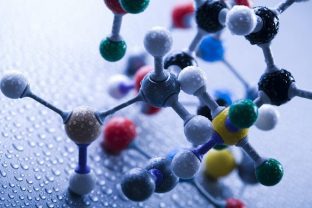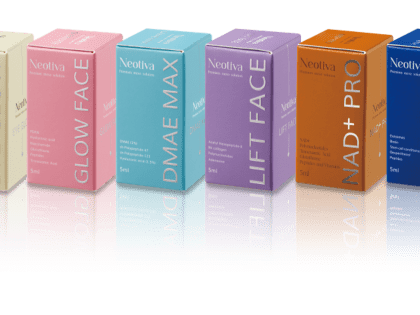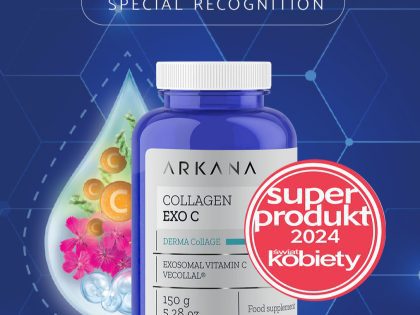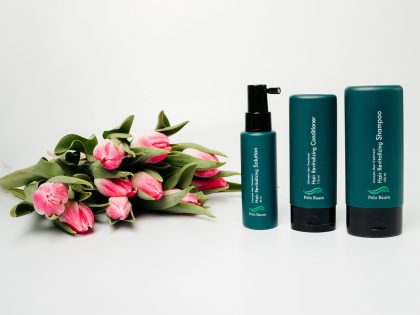Growth factors in skin care products and rules for their use
- Vitalitate
- Posted on

New, improved product ingredients regularly appear in aesthetic medicine. And while we are more or less familiar with peptides and stem cells, we still need to learn about growth factors. What are these factors, why are they needed and how to use them properly?
Growth factors were discovered way back in 1952, and the Nobel Prize for their discovery was awarded in 1986. Without going into the details of chemical processes, we can say that growth factors most directly affect the growth and division of cells, maintain all organs and tissues in a healthy state.
Every cell in the body produces growth factors. All growth factors stimulate biochemical processes, collagen and elastin production, skin renewal processes, increase fiber synthesis, which ultimately leads to an increase in skin density and elasticity.
It should be noted that although growth factors activate biochemical reactions in the body, they do not cancel daily care, as they stimulate the skin’s own reserves. So no one canceled daily moisturizing and nutrition in parallel with the use of growth factors.
Any cosmetic with a growth factor (one or more) is cosmetic. After all, they affect not only the upper layers of the skin, but also the deeper layers of the dermis. But cosmetics are constantly accused of being superficial. Growth factors are only those agents that act at a deep level, affecting the so-called “internal” aging processes. Many studies have shown that growth factors:
- reduces signs of aging;
- slows down the aging process
- can partially reverse aging – both external and internal.
Growth factors are able to do more – as research results show, they are able to change the “program” of cells to stop division and reproduction, collagen loss in the skin. They inhibit skin aging and skin emptying, reduce elastin damage.
Growth factors are also capable of restoring damaged blood vessels, reducing skin dryness, narrowing pores and improving complexion. For example, epidermal growth factor (EGF) consists of 53 amino acids!
By the age of 25, the skin has enough of its own growth factors. Therefore, their use is optional. But when the number of growth factors begins to inexorably decrease, the use of products with them in the composition compensates for the age-related deficiency.
Growth factors have become one of the most popular ingredients in cosmetics and injectables in recent years. The phrase that a face cream, eyelash gel, or skin rejuvenation product contains growth factors instantly increases the interest of customers, although beauticians themselves often cannot clearly explain what these factors actually make up and why they are good for the patient. What growth factors can or cannot do in cosmetics and how to handle them properly?
What do growth factors do in the skin and how do they work?
In general, every cell in our body produces some type of growth factors. Their task is to regulate the differentiation of cells from unspecialized to specialized, their growth and reproduction. Thanks to growth factors, a healthy state of cells and the functioning of all organs and tissues is maintained. From the point of view of biologists, the discovery of growth factors has significantly changed the views of scientists about the processes taking place in cells.
Each of the growth factors, such as those present in skin cells, is capable of triggering a chain of biochemical reactions responsible for regeneration, for the synthesis of collagen and elastin fibers, for the restoration of skin density and elasticity.
Growth factors are able to interact with each other, and an increase in the activity of one of them in the chain stimulates the activity of another.
However, no growth factor can independently create a skin regeneration effect, it can only activate the biochemical reactions taking place in it. But for these reactions to occur in principle, the skin cells must have certain safe reserves, which are created by using moisturizing, nourishing skin care products.
All growth factors have a low molecular weight and are able to easily penetrate the skin.
Functional characteristics of some growth factors in skin regeneration
In recent years, there have been many studies devoted to the study of the work of growth factors. These studies have confirmed that cosmetics with one or more growth factors in a certain concentration can reduce, slow down and even partially reverse some skin aging processes. Using growth factors, you can:
- reduce skin collagen loss;
- slow down the degradation of dermis tissue;
- reduce damage to elastin fibers.
Cosmetic growth factors are able to restore small damaged blood vessels, reduce skin dryness, narrow pores and even out complexion.
The following growth factors are considered the most popular for use in cosmetology:
- transformers – improve the synthesis of new collagen, blood vessels
- hepatocytes – stimulates the development of new blood vessels in the skin
- keratinocytes – accelerates the division of epidermal cells, similar to insulin
- platelets – regulate cell growth and division
Epidermal growth factor, which stimulates cell growth and division, regeneration of the epidermis, is particularly interesting. It is even called a “beauty factor”, because products containing it gradually increase the synthesis of collagen, elastin, hyaluronic acid and can quickly improve the appearance of aging skin.
Is it safe to use cosmetics with growth factors?
When using cosmetics with growth factors, the question of their safety must be emphasized, because these factors are produced in large quantities, not only during wound healing, but also in cases of tumors and autoimmune diseases. Some researchers believe that the constant use of cosmetics can cause health problems. So, for example, fibroblast growth factor, which is used in products to stimulate eyelash growth, is considered to be the cause of the development of eye inflammation. The use of transforming growth factor is associated with a risk of gross scarring, including keloids.
How to properly use products with growth factors?
Means with growth factors should be used correctly in the form of a course of up to six weeks, and then a break of several months is necessary.
- Do not use the means for people who have had oncology.
- Do not use products for patients under 25 years of age. In a word, they should not be used as a preventive measure, but only when there are already problems (dryness, wrinkles, etc.).




